The first thing you have to understand about the Bicycle Coalition of Greater Philadelphia is that it does not give a damn about the Greater Good. It is a small but effective lobbying group determined to shove bicycles down our throats.
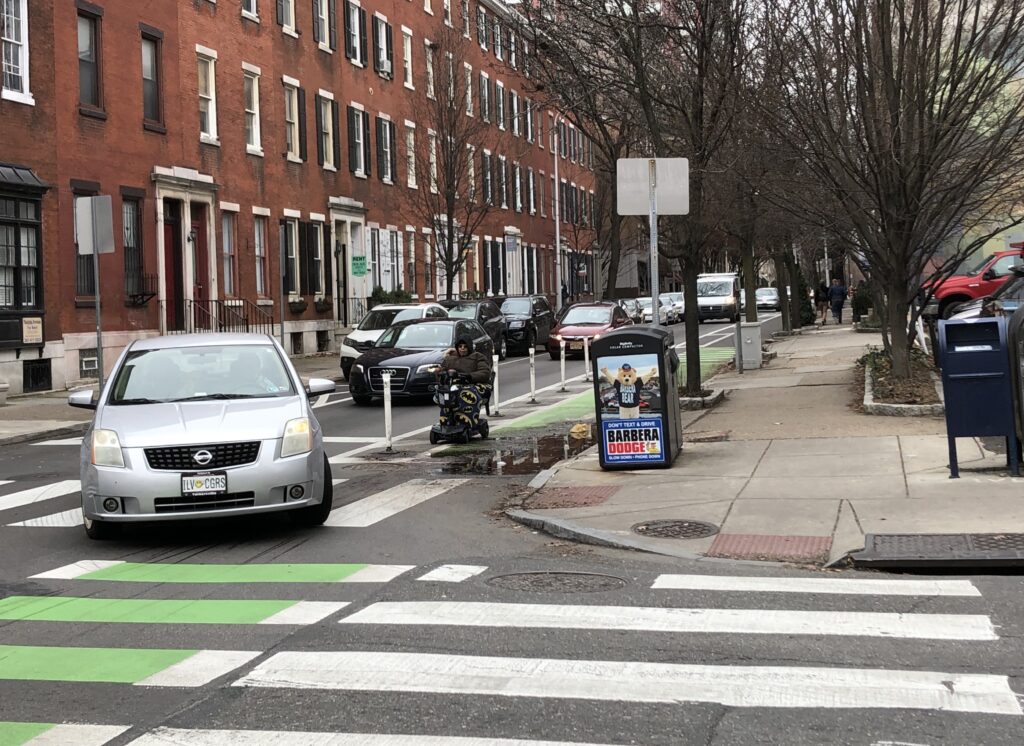
And to accomplish its ends, it will color the truth.
In recent weeks, you may have noticed the blossoming of white flexible poles at bike lane intersections. They are there for safety, says the Coalition, which points to the death of Emily Fredericks two years ago as proof of how desperately they are needed.
“While riding legally in the bike lane, the driver of a private trash truck made a right turn, cut her off, and struck her,” wrote pro-bike lane advocates late last year in the Inquirer.
What they did not say is the driver was not prosecuted, indicating he did nothing criminal. It was a tragic accident.
The Coalition used Fredericks’ death to push for the flex poles at intersections.
Here is the cold truth: Half of the flexible poles serve no purpose at all. They are make-believe security.
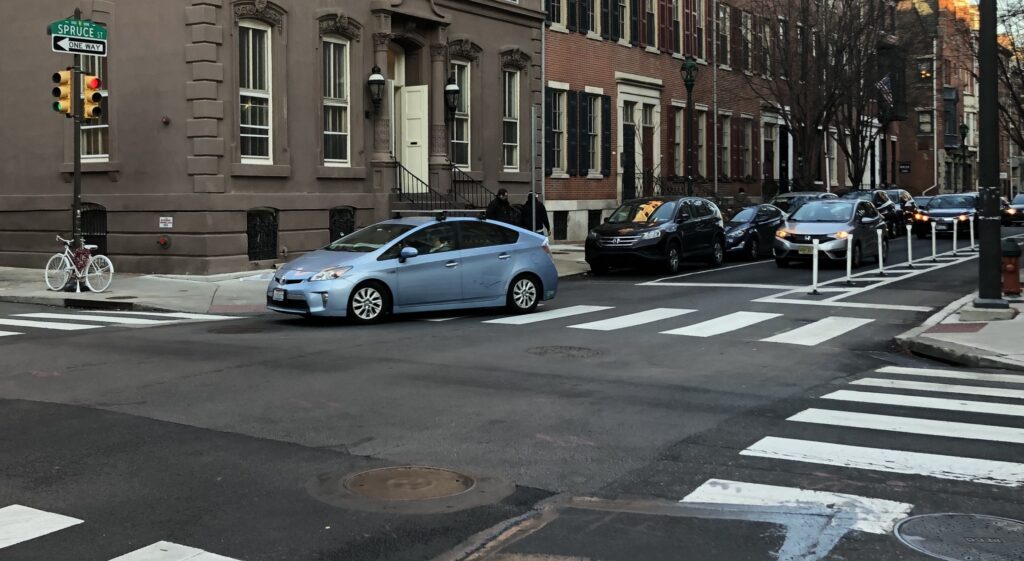
Here is a photo of the intersection at which Fredericks died. At the left, there is a white “ghost” bicycle, placed near where she died. At the right, see the flexible poles to the left of the turning car. Notice the right-turning blue car. There is nothing to protect a bicyclist from an accident such as the one that took Fredericks’ life. They are a sham, a placebo.
This is true at every intersection where the poles are on the opposite side of the direction of the turn. Total waste.
It seemed so obvious I wondered if I was wrong. I emailed deputy managing director for transportation Mike Carroll, who supervises bike stuff. I asked him about that and also about bicycle deaths in Center City. Here:
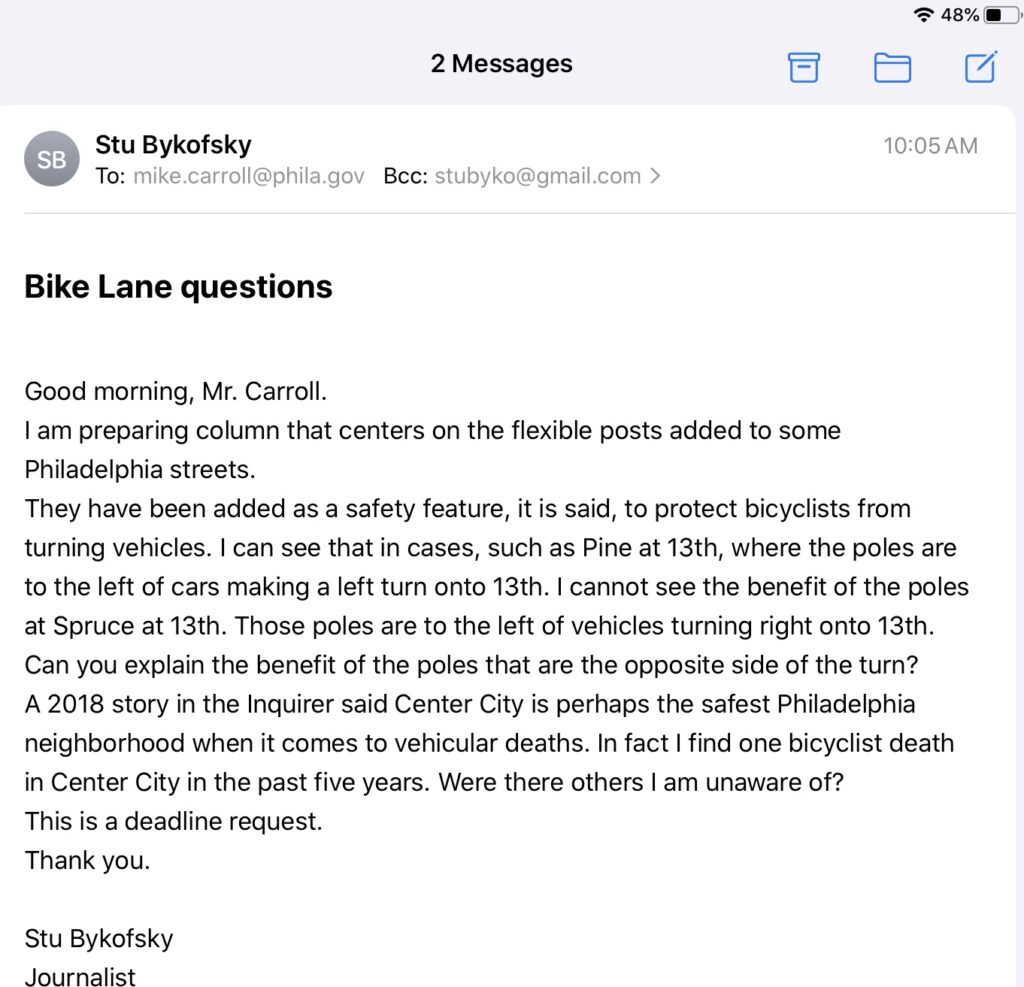
For the first time in my 60-year journalism career, I was blocked by someone who supposedly is a civil servant.
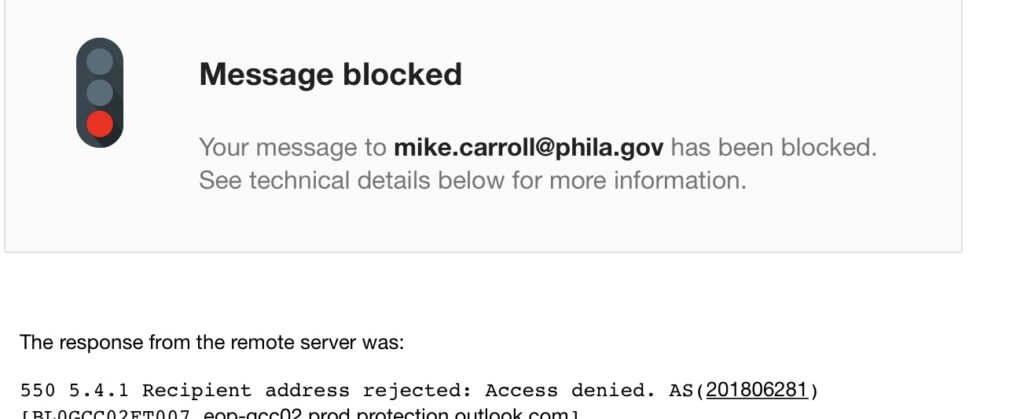
Not so civil when you are dealing with the progressive, transparent Kenney regime. [Sarcasm font.]
In 2018, the Inquirer reported that Center City is about the safest neighborhood in the city when it comes to vehicular deaths.
The facts: Center City is already very safe and half the flexible posts serve no purpose.
I hate to ask questions about what the heck the city is doing with this bike lane mania, but someone must. It’s like a virus that starts in one city and creates a faux wave in other cities that feel they need bike lanes in order to be hip, never mind the need.
Just 2.6% of Philadelphians commute by bike to work according to the most recent American Community Survey. Nationally, it is down slightly from the year before.
In 2010, the city announced a wet dream goal of having 6% of commuters to get to and from work by bicycle by the end of a decade. For almost as long, I’ve been saying it would not happen — and it hasn’t, despite the addition of some 200 miles of bike lanes. It’s clearly a case of if you build it, they will not come. It’s a joke.
There should be no bike lanes when they replace one of two operating lanes, as on Spruce and Pine. Any fool can see it slows traffic, and adds to the commute time. The city would be far better spending money on mass transit, which can be used by everyone.
Bike lanes can and should be used where there is room for them and they do not snarl traffic.
The skinny bike lane on Washington Avenue, for instance, doesn’t eat up a lane of traffic, while providing some extra safety for bicyclists.
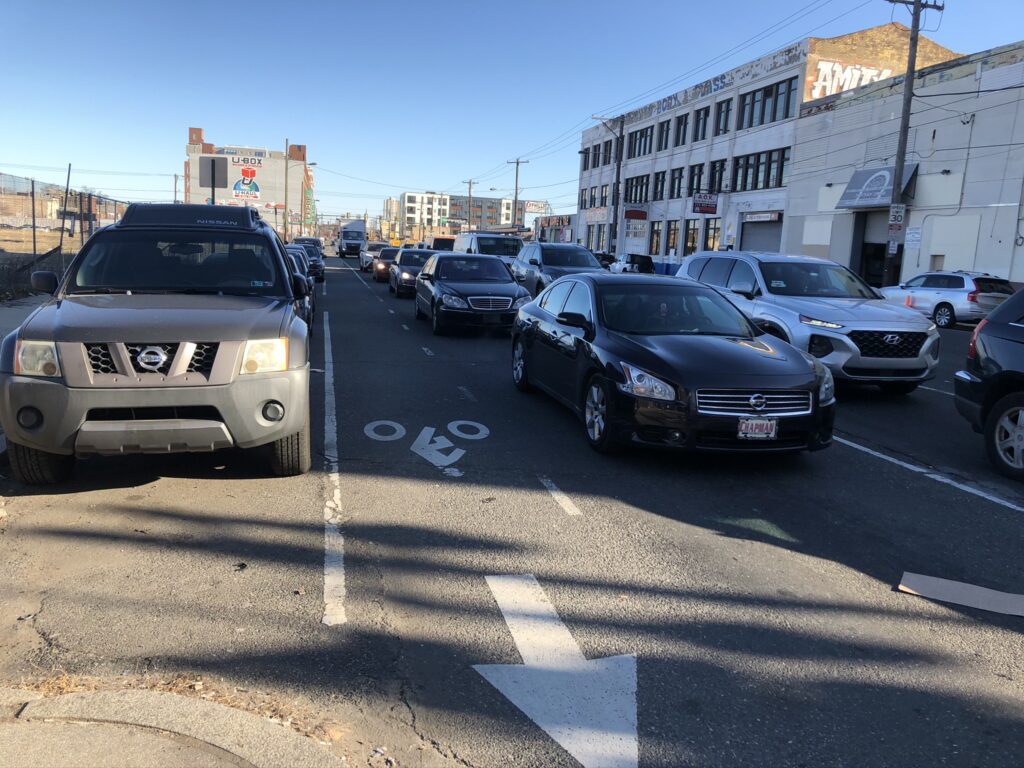
On wide JFK and Market, there’s room for bike lanes, no problem.
See? I am only against bike lanes where they make no sense.
HAPPY SUNDAY !!!
Pallie,
There you go trying to make sense in of all places, Kennyville (AKA, Philadelphia ). You know, better than most, that if you want to get elected and then stay in office, you placate the few, the rich, the powerful.
Here’s a novel idea – again. Share the road. Common sense and common courtesy goes a long way. (most of which is long gone and never to return )
Tony
Share the road is the law. Some auro drivers are pigs, most aren’t and we don’t need bike lanes.
Between the parking vendor legislating more need for private parking, to the contracts for those pipes to be installed. Follow the money.
Those pipes have nothing to do with actual bikes or citizens.
In a city (Philadelphia, for those of you with a public school education) with deplorable schools, outrageously high taxes on wages, and a stunning murder rate, I am happy to see that the leadership is focused on protecting the thousands upon thousands of bicyclists clogging the streets. The only more insane governmental action was the feds forcing every corner in the USA to be fitted with ramps…for the millions of people in wheelchairs we see every day, clogging the streets. Jonathan Swift, please call your office — we have a short-story suggestion for you to write.
Vince,
point of information: the gov was sued by the ADA. not only do you need curb cuts at corners, but look at the “EL” platform the next time you go for a ride. That’s just two of many
Tony
As it happens, Vince, I did a column on the Fed-ordered curb cuts – $858 million for Philly. Billions and billions nationally. https://www.inquirer.com/philly/hp/news_update/20121102_Stu_Bykofsky__Stupid_ramp_tricks__Curb_your_enthusiam.html
Right on target. Large parts of the ADA are symbolic of government’s wretched excesses.
A week ago a Bicyclist cut out the bike lane on Pine Street in front of me. I almost hit them and honked my horn instinctively .He then pursued me and took his bike lock and threw it at my car denting it. I now have a camera in my car for a holes like this. Bikers should be licensed insured and have to obey the traffic laws.
The Bike Coalition fights all plans to license, insure or register bikes. Enforcement of traffic laws? It approaches zero and that’s the way the mayor wants it. If not, it would change. https://www.inquirer.com/opinion/stu-bykofsky-mike-carroll-septa-police-enforcement-tickets-center-city-20190604.html
Stu,
I’ve been cycling to work in Ottawa when there’s no snow on the ground for neigh-on three decades – long before the cycling nutters started pushing for special treatment. It’s always been a ‘pay attention’ sort of undertaking. There’s the odd thing that’s been done that improved matters, but more often than not I felt safer on the pre-bike lane streets because you didn’t assume anything, you paid attention. In a collision with a car, whether I’m ‘in the right’ or not isn’t really likely to matter a great deal to me. My advice to newbie city cyclists? Assume you’re invisible and make really conservative choices.
Bicycling can be dangerous, it’s an assumed risk.
Stu,
One ‘improvement’ made in downtown Ottawa has been to install smaller ‘bike and pedestrian only’ signal lights at major intersections, below the regular traffic lights. Cyclists and walkers get their green light a few seconds before the car drivers do. This doesn’t really inconvenience anyone, but gets those of us on bike and on foot a couple of yards into the intersection before snoozing right-hand turners have a chance to run us over. So they notice us before hitting the gas peddle. Getting slammed by right-turning cars has always been a major risk, and this little fix reduces the chances of it significantly. A minor accommodation that seems to make a lot of sense, whether there are bike lanes or not.
That is not a bad idea.
When do we Kevlar vest so we can walk down the sidewalk safely. Or at least arm us.